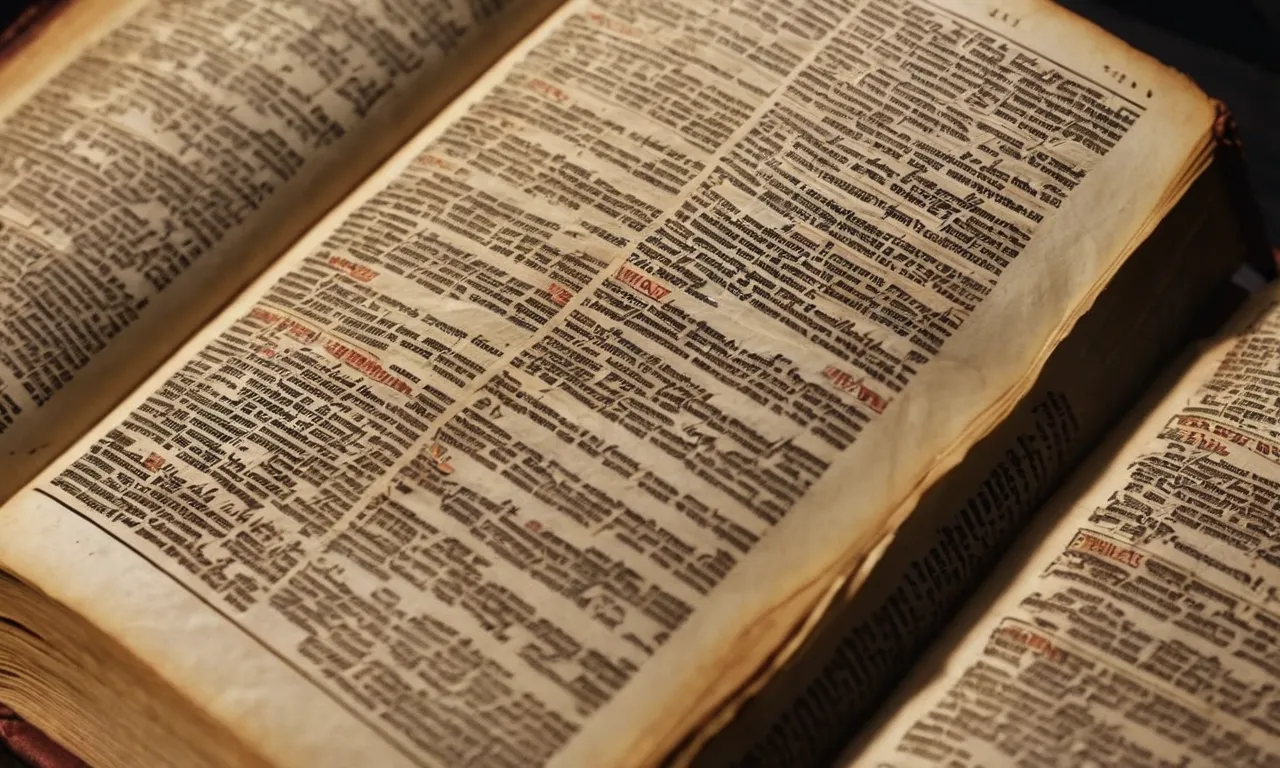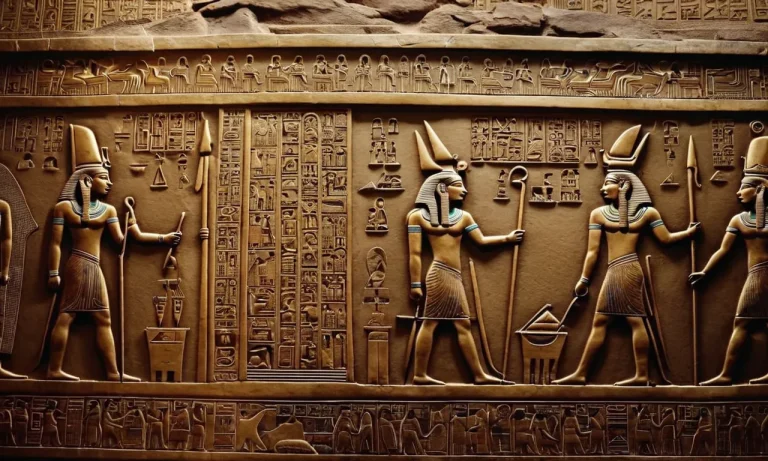How Many Times Is Ethiopia Mentioned In The Bible?
The Bible contains many references to nations, regions, and cities, some more frequently than others. One such location is the ancient kingdom of Ethiopia, situated in Northeast Africa along the Red Sea. But how many times exactly is Ethiopia mentioned in the scriptures?
If you’re short on time, here’s a quick answer to your question: Ethiopia is mentioned around 40 times in the Bible.
Biblical References to Ethiopia
Old Testament References
Ethiopia is mentioned over 40 times in the Old Testament of the Bible. Some of the key references include:
- Genesis 2:13 – The Gihon River of Ethiopia is mentioned as one of the four rivers flowing out of the Garden of Eden.
- Numbers 12:1 – Moses’ wife, Zipporah, is mentioned as being a Cushite woman. Cush was the Hebrew name for the land south of Egypt, now known as Ethiopia.
- 2 Samuel 18:21-32 – The Cushite messenger brings news to King David of the defeat of his rebellious son Absalom. This is an early reference connecting the term Cushite with the land of Ethiopia.
- Isaiah 18:1-7 – A prophecy about Cush sending ambassadors by sea, representing an early connection between Ethiopia and maritime travel and trade.
- Jeremiah 13:23 – A rhetorical question is asked, “Can the Ethiopian change his skin?”. This shows Ethiopians were known for their dark skin even in Biblical times.
- Jeremiah 38:7-13 – Ebed-Melek the Ethiopian helped save the prophet Jeremiah from death in a cistern.
- Jeremiah 39:15-18 – God tells Ebed-Melek he will be spared due to his faithfulness.
- Acts 8:26-40 – An Ethiopian eunuch is baptized by Philip and goes on to help spread the faith.
As these verses show, Ethiopia has deep roots in the Biblical narrative going all the way back to Eden. Ethiopians are portrayed as key allies and servants of God at pivotal moments in Scripture.
New Testament References
The New Testament contains a few important references to Ethiopia as well:
- Acts 8:26-40 – The Ethiopian eunuch baptized by Philip helps spread the faith in Ethiopia when he returns home.
- Simeon called Niger in Acts 13:1 – Early church leader Simeon Niger means “black”. Some scholars believe he could have been from Ethiopia.
So while few direct references, the Ethiopian eunuch’s conversion story is hugely significant for spreading Christianity to Africa in the earliest days of the faith.
According to Ethiopian tradition, the eunuch continued the work of Matthew and Mark in spreading the faith after returning home from Jerusalem. By the 4th century AD, Christianity became the established church of the Aksumite Kingdom, one of the earliest Christian nations.
So while references are less frequent than the Old Testament, the references to Ethiopia in the New Testament marked a pivotal movement joining Africa with the growth of the church.
Significance and Context of Ethiopian References
Ethiopia in Prophecy and Psalms
Ethiopia is mentioned over 40 times in the Bible, first appearing in Genesis as the land where Hagar and her son Ishmael were sent by Abraham (Genesis 21:18). The nation is also referenced in some key prophecies and psalms.
For example, Psalm 68:31 says “Ethiopia shall soon stretch out her hands unto God.” This is believed to be a prophecy of Ethiopia’s conversion to Christianity in the 4th century AD.
The prophet Zephaniah also mentions Ethiopia, saying that they will become a land of God’s people: “From beyond the rivers of Ethiopia my suppliants, even the daughter of my dispersed, shall bring mine offering” (Zephaniah 3:10). Isaiah 18 contains an entire chapter on Ethiopia’s future redemption.
Philip’s Encounter with the Ethiopian Eunuch
One of the most well-known biblical passages involving Ethiopia is when Philip encounters an Ethiopian eunuch in Acts 8:26-40. The eunuch was an important official in the court of the Ethiopian queen Candace. As he was returning from worshiping in Jerusalem, he was reading the prophet Isaiah.
Philip explained the gospel to him and baptized him – one of the first recorded gentile conversions.
This story showed that the gospel was now going beyond the Jews and Samaritans to all nations. It also demonstrated how Scripture was being fulfilled, as Isaiah 53 contains prophecies about the Messiah which Philip explained to the eunuch. The Ethiopian eunuch then went on his way rejoicing.
Ethiopia and the Early Church
Christianity spread to Ethiopia very early on, most likely through converts such as the eunuch in Acts 8. The church in Ethiopia traces its origins to the first century. By the 4th century, Christianity became the recognized and privileged religion under King Ezana.
The Ethiopian Orthodox Tewahedo Church was part of the greater Coptic Church.
Monasticism and asceticism became important fixtures of the Ethiopian church. Famous monasteries include Debre Damo, founded in the 6th century by the monk Abba Aftse. Ethiopia also sheltered Muslim relatives of Muhammad early on from persecution.
These factors allowed the Ethiopian church to thrive despite being surrounded by non-Christians.
By 1959, the church claimed around 25 million baptized members. Today, the Ethiopian church has around 45 million followers, showing the lasting spiritual impact this biblical nation has had.
Key Figures and Stories Involving Ethiopia
Moses Marries an Ethiopian Woman
The Old Testament book of Numbers records that after the Exodus from Egypt, Moses married an Ethiopian woman (Numbers 12:1). This interracial marriage was opposed by Moses’s siblings Miriam and Aaron on account of the Ethiopian woman’s race.
As punishment for this opposition, God gave Miriam skin disease but healed her after Moses interceded on her behalf.
Ethiopian Invasion of Judah
During the reign of Judah’s King Asa in the 10th century BC, the Ethiopians invaded Judah according to 2 Chronicles 14:9-15. The Bible records that Asa led the people of Judah in prayer to God, then defeated the Ethiopians in battle by God’s power.
After Asa’s victory, the Ethiopians did not invade Judah again during Asa’s lifetime.
Queen of Sheba Visits King Solomon
First Kings 10:1-13 and 2 Chronicles 9:1-12 describe the Queen of Sheba’s visit to Jerusalem in the middle of the 10th century BC. The Bible says she came to test Solomon’s wisdom with hard questions and was impressed with his knowledge, wealth, and prosperity.
Before leaving, the Queen of Sheba gave King Solomon rich gifts of spices, gold, and precious stones.
Though the biblical text does not identify Sheba with certainty, Ethiopian tradition claims that the Queen of Sheba came from Ethiopia. Her visit helped strengthen ties between Israel and distant lands like Ethiopia.
Conclusion
In summary, while not mentioned as frequently as major powers like Egypt, Assyria or Babylon, the kingdom of Ethiopia appears around 40 times in the Bible. Its references span from the Torah to the New Testament, often portrayed as a distant kingdom of power, piety and mystery.
Examining these Ethiopian passages sheds light on Jewish-African relations and the reach of Christianity in its early days. Whether through prophecy, psalms, genealogy or narrative, the Bible weaves the story of Ethiopia into the grand saga of Scripture.








